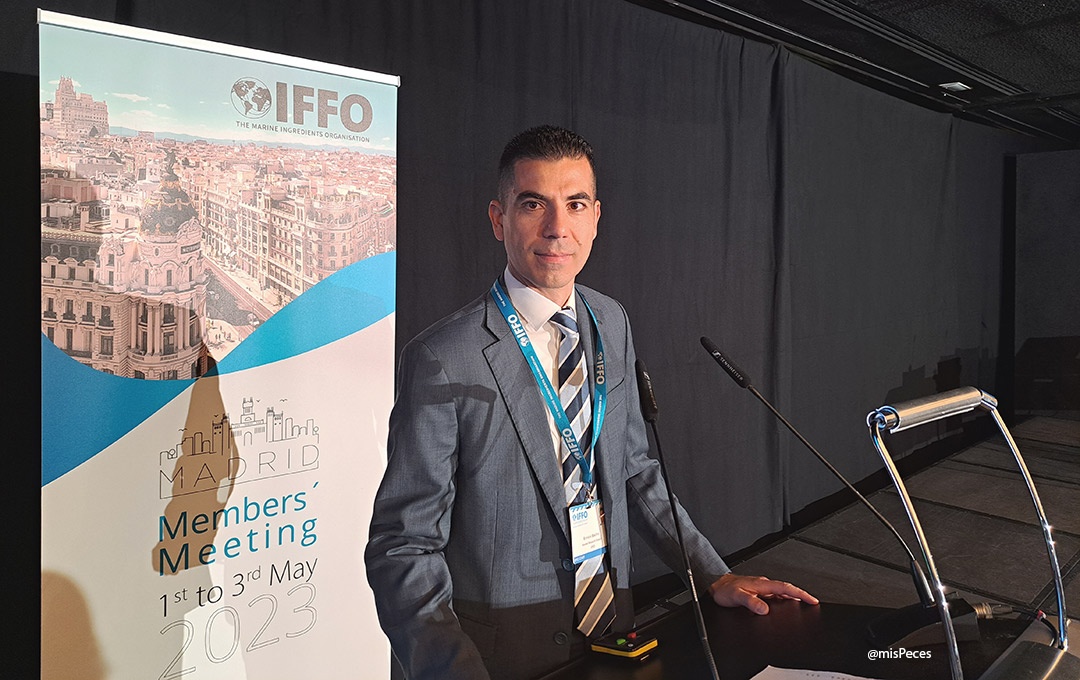 Enrico Bachis | By misPeces
Enrico Bachis | By misPeces
Enrico Bachis, Market Research Director at the Marine Ingredients Organisation (IFFO), in a recent presentation at AquaFarm 2025 in Pordenone, Italy, explained that “fish by-products, usually not considered as food but often utilized for non-food purposes, have been intertwined with marine ingredients for decades”. These by-products of fish and seafood make up between 30% and 70% of the total weight of processed fish, depending on the species and the method used. These raw materials, as the expert detailed, hold significant potential to be reused in the production of fishmeal and fish oil, thereby helping to reduce waste and optimise natural resources.
In Bachis’ words, fish by products represent an opportunity for the industry. “Improving their utilization is important for ecological, social, and economic reasons and to safeguard consumer health and food security.”
Data revealed at conference show that in 2023, nearly 38% of fishmeal production come from by-products, while this percentage significantly increased in fish oil production, where almost 55% came from these materials. In Europe, according to Bachis, the proportion of by-products is even more significant in fish oil production, reaching about 64%.
These figures underscore an upward trend in the use of by-products, driven by major technological advancements that facilitate their processing and growing environmental awareness promoting more sustainable practices in the industry. Innovations, as he explained, include improvements in the efficiency of collection and processing of by-products, ensuring these materials retain their critical nutritional values for aquaculture feeding.
Among the benefits of using this source of raw material is its rich content in nutrients such as omega-3 fatty acids, amino acids, vitamins, and minerals. However, they also represent challenges such as a significantly higher proportion of bones and a higher ash content, and slightly less protein compared to fishmeal obtained from whole fish.
For this reason, while oil derived from by-products can be freely used, the amount of trimming used in the meals could be limited in diets with high nutrient densities like those of salmonids.
Bachis also pointed to other inherent challenges, such as the need to “ensure the freshness and nutritional value of these raw materials,” which involves significant investments in infrastructure and technology.
Therefore, to improve the use and quality of by-products, the expert recommends investing in and developing efficient nutrient preservation technologies to prevent oxidation processes. These by-products, he indicated, should be treated as if they were intended for human consumption, which means rapid transport, immediate on-site processing, cooling, or other appropriate actions.
In this regard, as he noted, financial investments are crucial to create the necessary infrastructure. Additionally, proximity to processing facilities and technological innovations, such as the inclusion of fish meal plants on fishing boats or processing for some of the major wild species, have led to high-quality product acquisition.
The presentation concluded with a call to action for the industry: as aquaculture is expected to more than double its volume by 2050, 70 million mt of aquafeed might be needed by 2030, where to get the missing feed ingredients. Maximising the use of circular resources, alongside the responsible management of fisheries is certainly the way forward.


